
Search Wild Foods Home Garden & Nature's Restaurant Websites:
Ginkgo Nuts
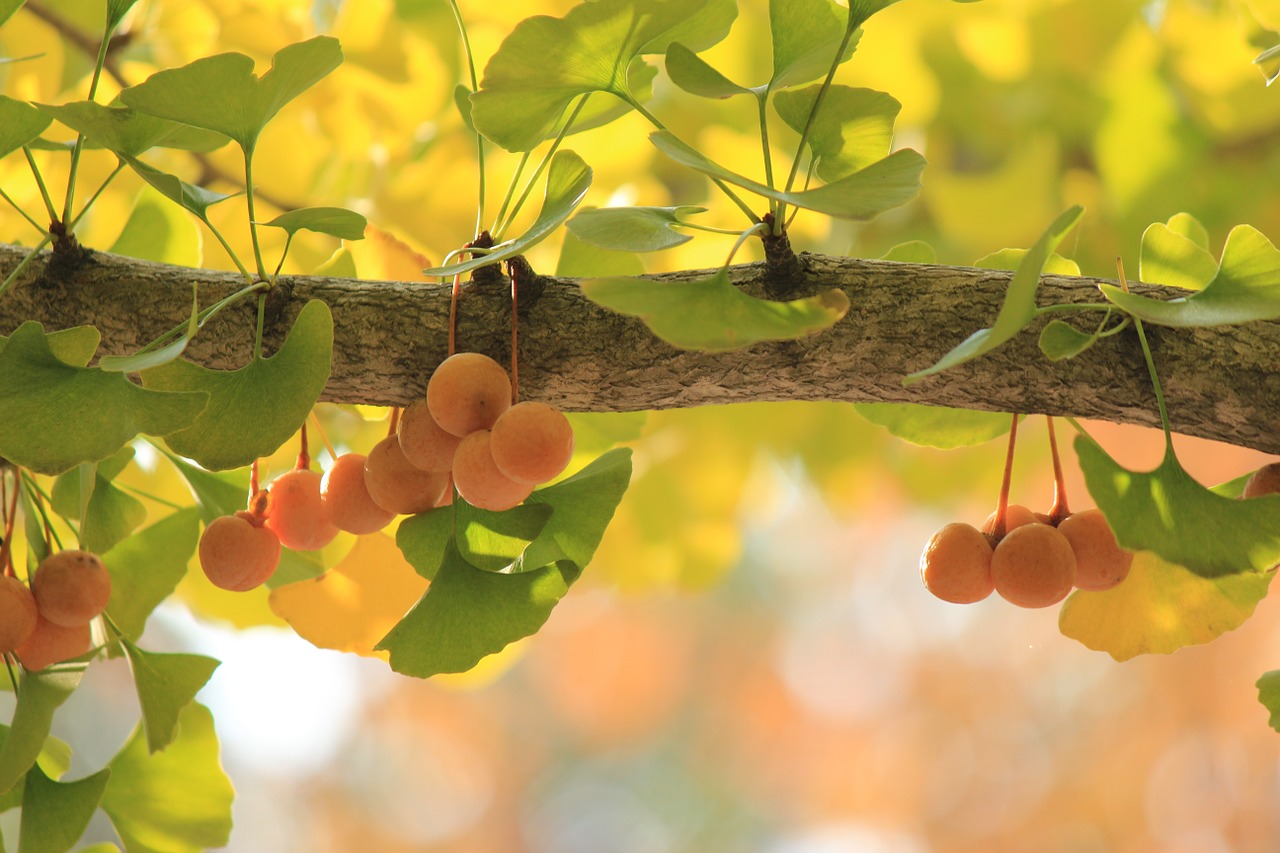
Ginkgo leaves and nuts on tree in fall.
(NOTE: If you are not interested in growing the Ginkgo tree, but just finding the nuts, try going to the Nature's Restaurant Online site for Ginkgo Nuts.)
Ginkgo (Ginkgo biloba). Also known as the Maidenhair Tree. Most people in North America have no idea that the Ginkgo tree makes edible nuts, as most Ginkgo trees in North America are clones of male Ginkgo trees. In Asia the female trees are grown to produce the Ginkgo nut food crop. The orange outer pulp of the Ginkgo nut is messy and strongly smells like feta cheese going off from the Butyric acid content, so most people don't want the female trees as an ornamental. Under the female tree can be quite a mess at harvest time. However the nuts are worth the effort, and if you want a Ginkgo anyway, and want your trees to produce food, this might be a tree you should consider. Don't plant it where children could play - the gooey orange flesh of the fruit can cause skin reactions.
A very popular ornamental, but only the males. If you want to have the trees to produce the nuts, don't buy a Ginkgo from a nursery - they are always male clones. You could call a nursery and see if they carry female clones, but I doubt they would. There is no way to tell if the tree is male or female until it is mature enough to start flowering and producing the fruit. The only way to get them yourself is to find some nuts and plant a few. If you only plant one, you might get a male, you might get a female. If you plant a few, you should get both - which you will need if you want the females to produce fruit. A very nice tree that can grow in a wide variety of soil conditions.
The only places in my experience that you will find a female Ginkgo in North America are in parks or arboretums. You could go and look in the fall in such places, or maybe call and ask the head gardener if they know if there are female Ginkgo trees.
Soil & Site: Full sun. Can adapt to a very wide range of soil types and pH levels. Ideally, it likes rich, loamy soil that is well drained and moist that is just slightly acidic.
Planting: In the fall after gathering a few of the fruit that has fallen, take the nuts out of the fruit, push them into the prepared soil about 5 cm (2 inches), mulch over, and put a stake beside it so you know where it is. The soil preparation is just digging the soil in a hole to make it looser and mixing in some organic matter if is it not already rich and loamy. Water it during a drought for a couple of years.
Harvesting: In the fall when the leaves are turning yellow the fruit will turn an apricot orange color and begin to fall from the tree. See pictures included with instructions.
A warning, only gather, husk and wash the nut with gloves, as the gooey orange flesh can irritate the skin. Wash off the remaining orange goo after removing the nut from the fleshy outer husk, and dry the nuts to keep for eating. Once dried, you can keep them for a long time by putting in containers or baggies in the freezer.
Using: They shell easily, and are good a few at a time in cooked foods. Too many can cause a type of mild poisoning - especially children, so I recommend only up to five cooked into a meal, and only for adults. Otherwise, they are considered very healthy. Make sure you are not allergic by trying only a small amount at first, and never overdo it with any food. Only eat these cooked - never raw.
Description:
- USDA Plant Hardiness Zone: 3-8 (More information on hardiness zones).
- Soil pH: 5.5-7.5 (prefers slightly acidic, but is quite adaptable to range of pH)
- Plant Size: Up to 35 meters (115 feet) tall, and on occasion much larger
- Duration: Very long lived, some are thought to be over 2000 years old.
- Leaf Shape: Simple, fan shaped, often with a single split in the center of the other end from the stem given a cloven hoof shape. Sometimes more than one split, sometimes the fan shape is very triangular with the end away from the stem fairly flat, sometimes very rounded.
- Leaf Phyllotaxis (Arrangement) on branch: Alternate clusters of leaves, or Alternate single leaves
- Leaf Size: Up to 7.5 cm (3 inches) long with a stem that is also up to 7 cm (3 inches) long.
- Leaf Margin: Sides are smooth, but the end away from the stem can be variable forms of bumpy and wavy
- Leaf Notes: Leaves turn a beautiful bright, deep yellow in fall. All leaf veins radiate from the stem and fan out to the leaf end - there is no branching of the leaf veins.
- Flowers: Male trees: small yellow-green pollen cones. Female trees: barely noticeable ovules come out where the clusters of leaves come out, ovules are shorter than the leaves.
- Fruit: Green when unripe, slightly smaller than a ping-pong ball. Yellowish-orange-tangerine when ripe.
- Bark: Grey with vertical fissures
- Habitat: Full sun, well drained, moist soils. In North America almost exclusively found as a planted ornamental, and as such, it is rare to find a female.
Web Resources:
- Recipe search on the web here (Google search) and here (Bing search).
- Pictures on the web here (Google images) and here (Bing images).
- Interactive USDA distribution map and plant profile here.
- The Biota of North America Program (BONAP) distribution map here. BONAP map color key here.
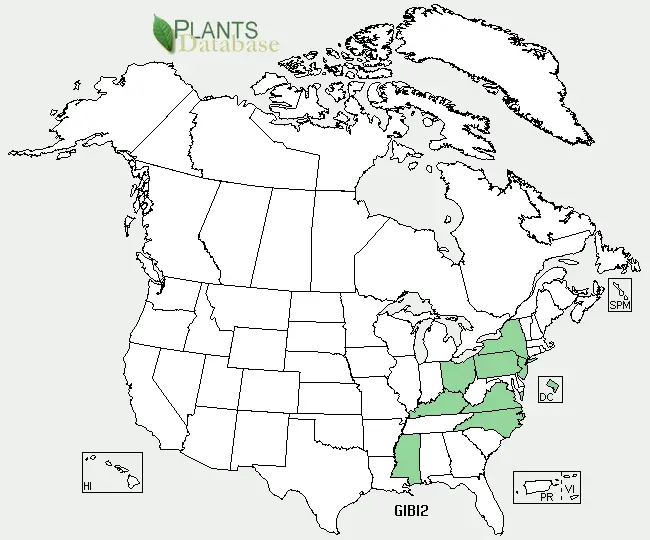
Ginkgo (Ginkgo biloba) range where it has naturalized. It can be grown in most of Eastern North America. Distribution map courtesy of U. S. Department of Agriculture (USDA Natural Resources Service) and used in accordance with their policies.
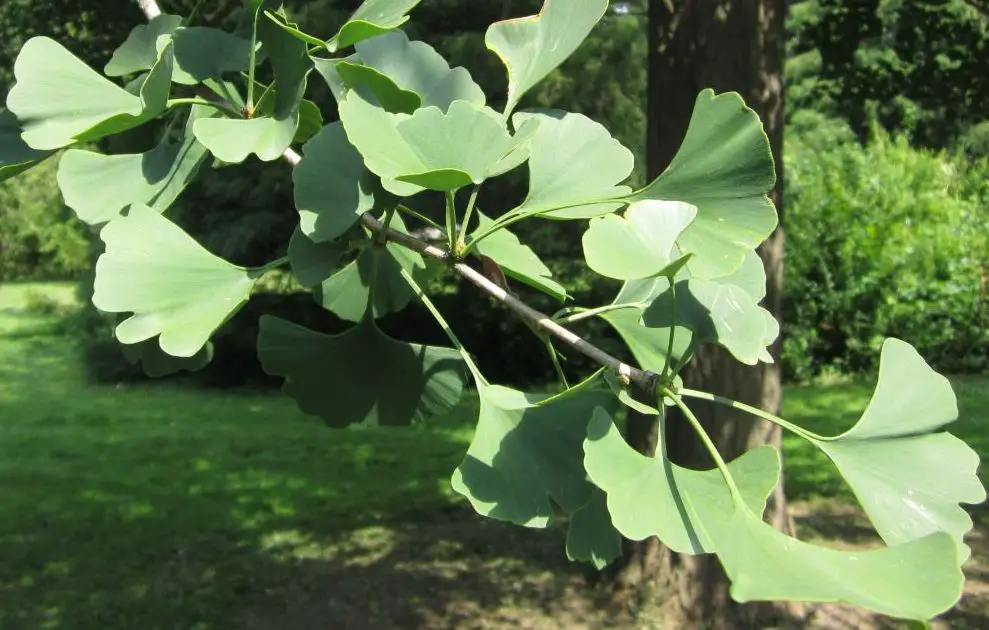
Ginkgo leaves in Summer from a female tree near me in a local park.
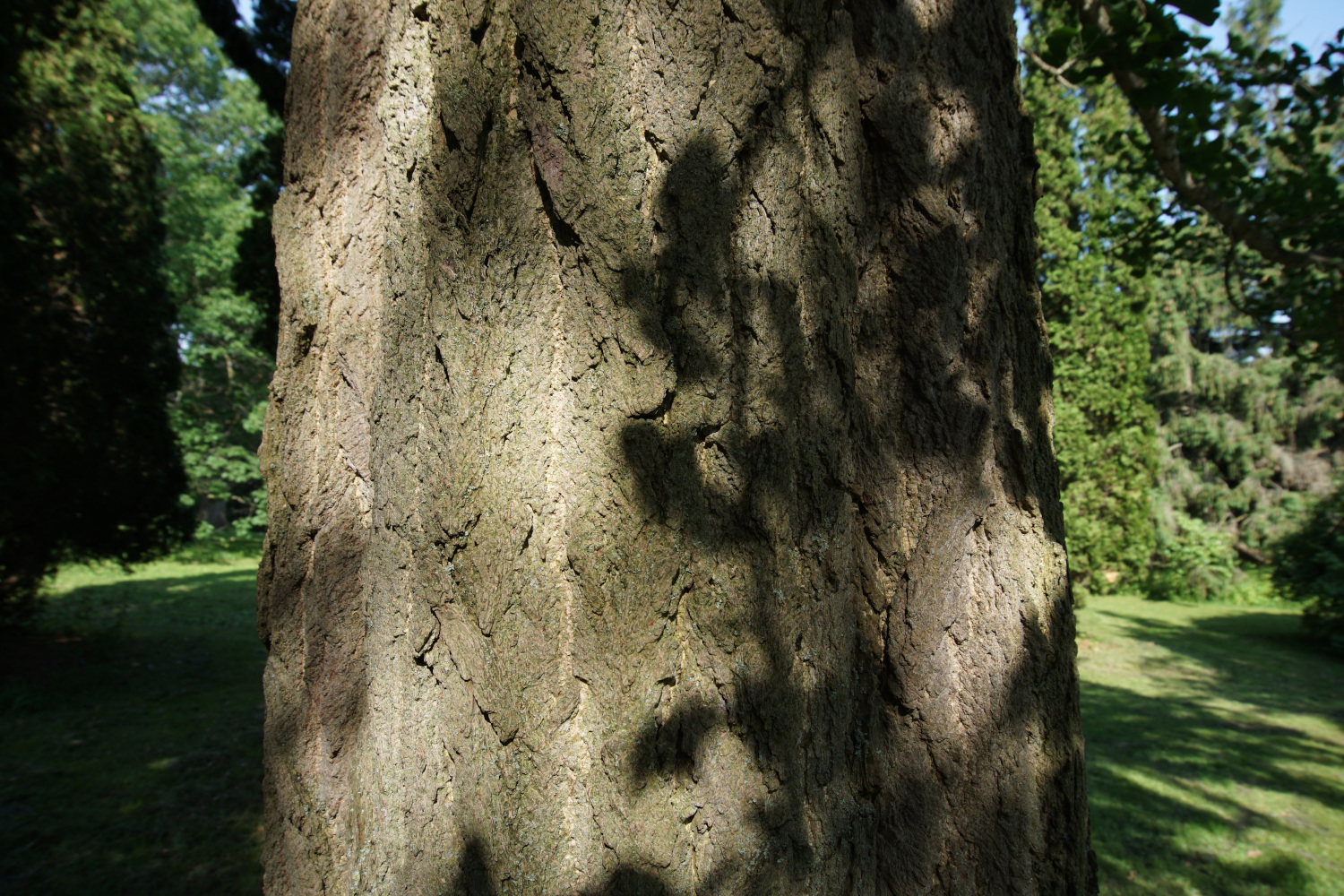
The trunk of a mature Female Ginkgo Tree.
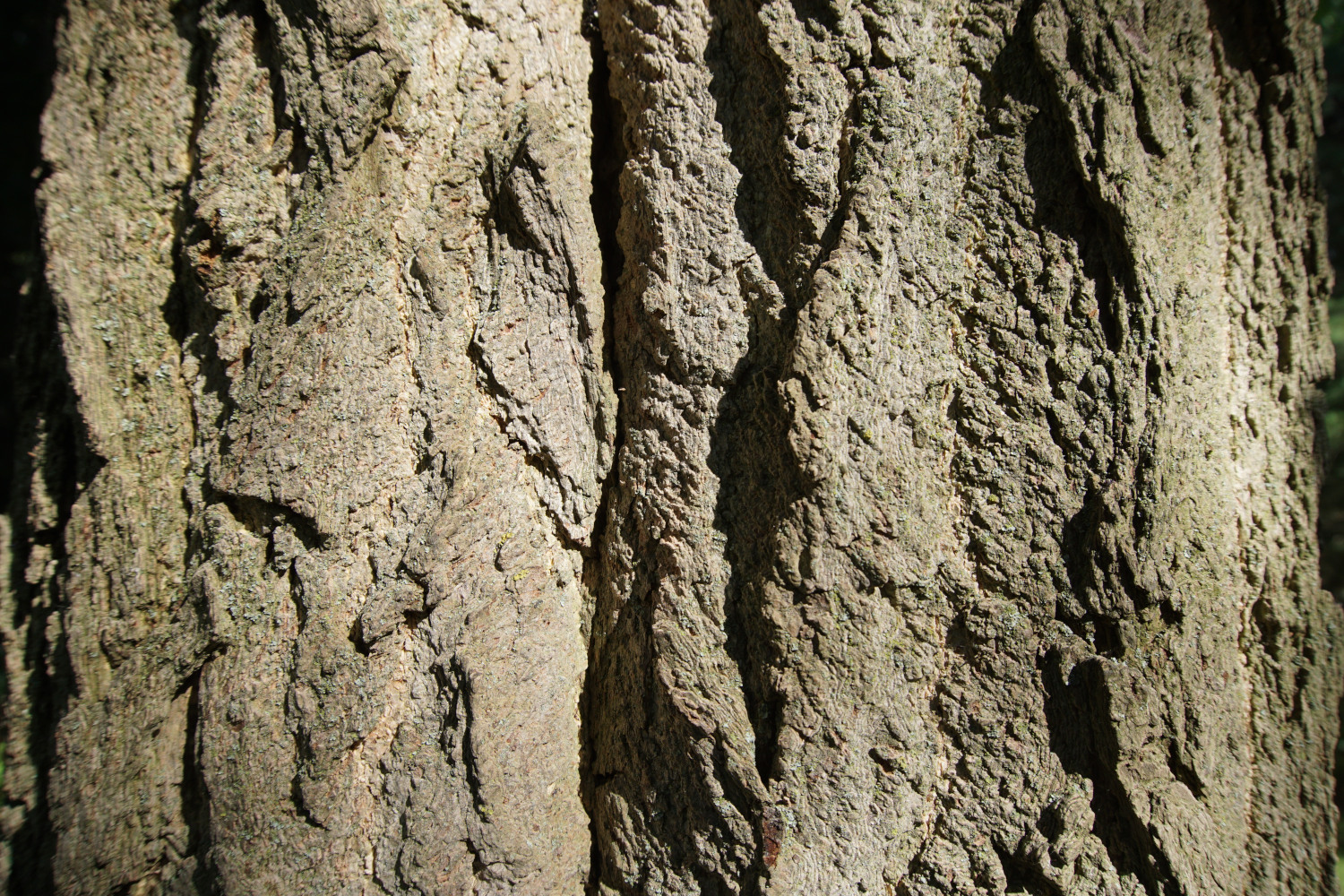
The trunk of a mature Female Ginkgo Tree up close.
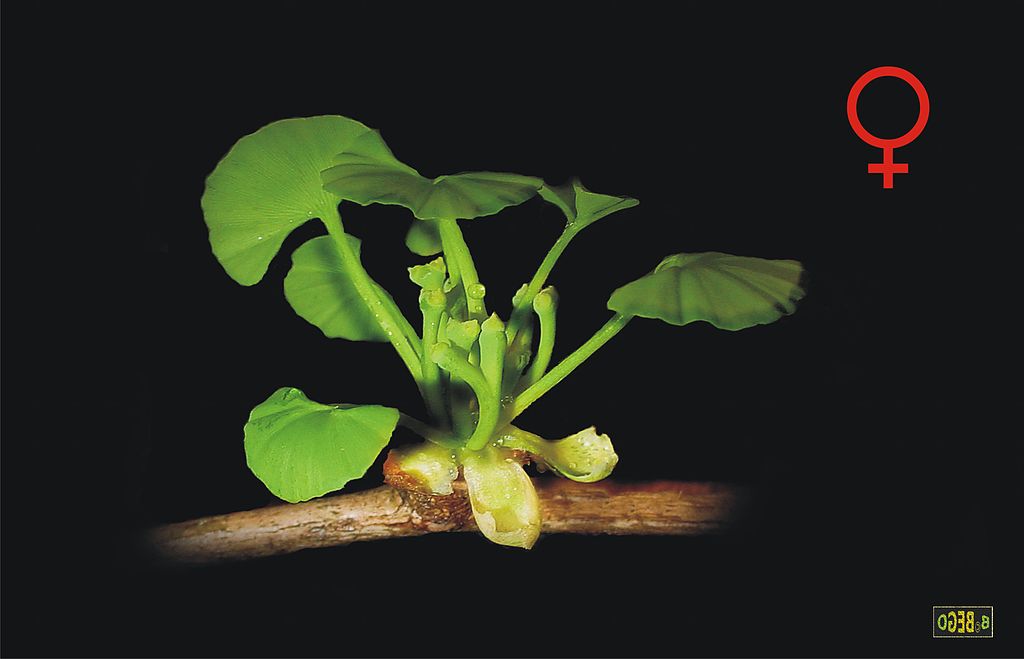
Flowers from a female Ginkgo tree. (By: Ginkgob CC BY-SA 3.0)
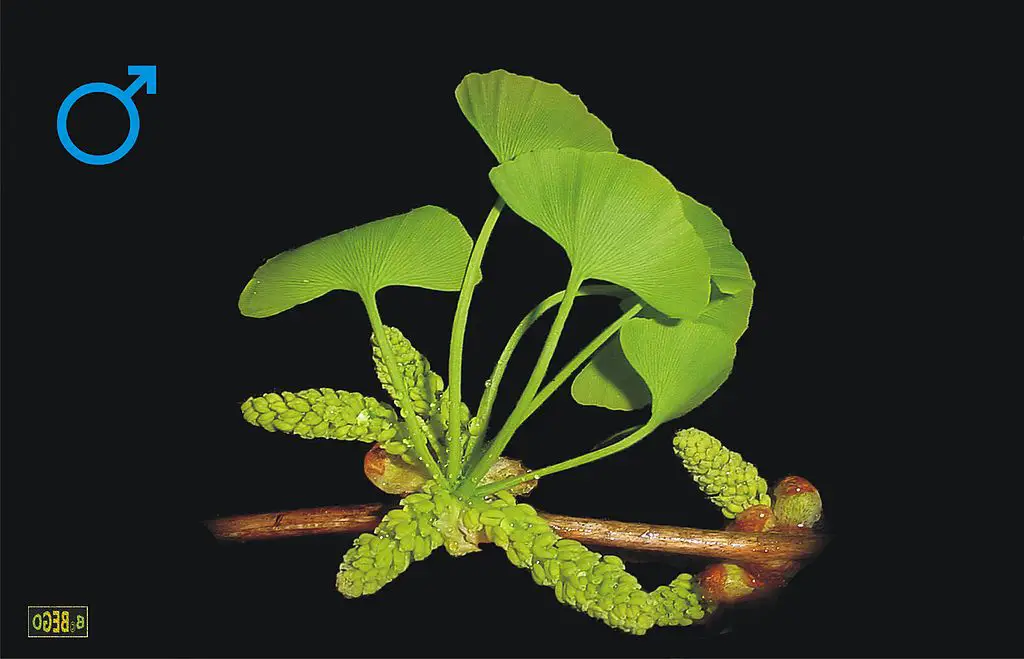
Flowers from a male Ginkgo tree. (By: Ginkgob CC BY-SA 3.0)
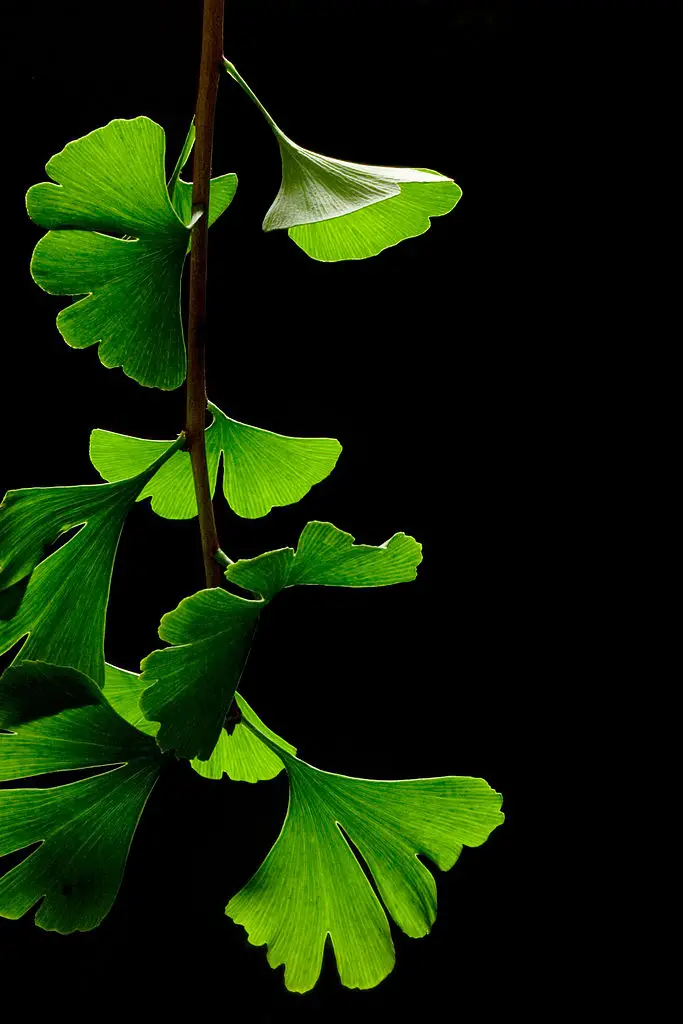
Ginkgo leaves in summer. (By: James Field (Jame) CC BY-SA 3.0)
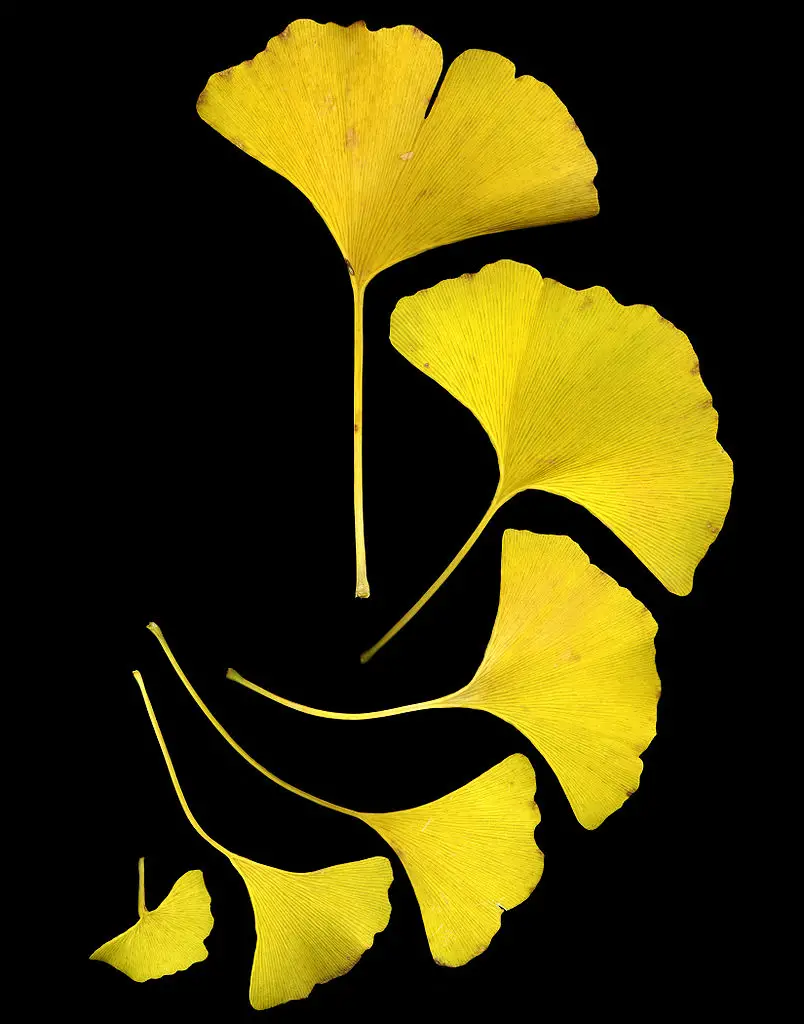
Fall leaves. (By: Joe Schneid, Louisville, Kentucky CC BY-SA 3.0)
Ripe Ginkgo fruit on tree about to fall. Color of leaves when fruit is ripe can range from half green & half yellow to fully yellow. (By: Famartin Attribution-Share Alike 4.0 International license)
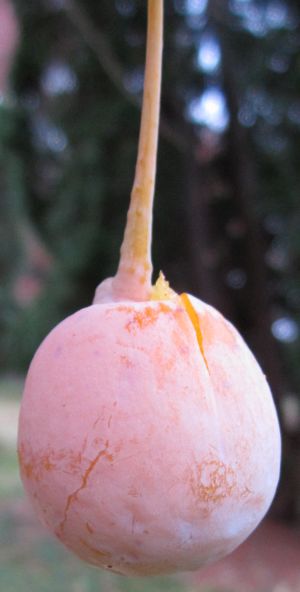
Single Ginkgo fruit that is ripe.
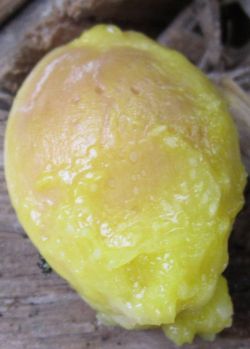
Ginkgo nut after most of the outer pulp was removed, but before being washed. I clean them to this stage under the tree, then take home to wash.
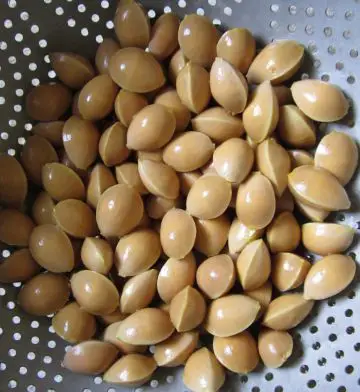
Washed, ready to dry and store or use.
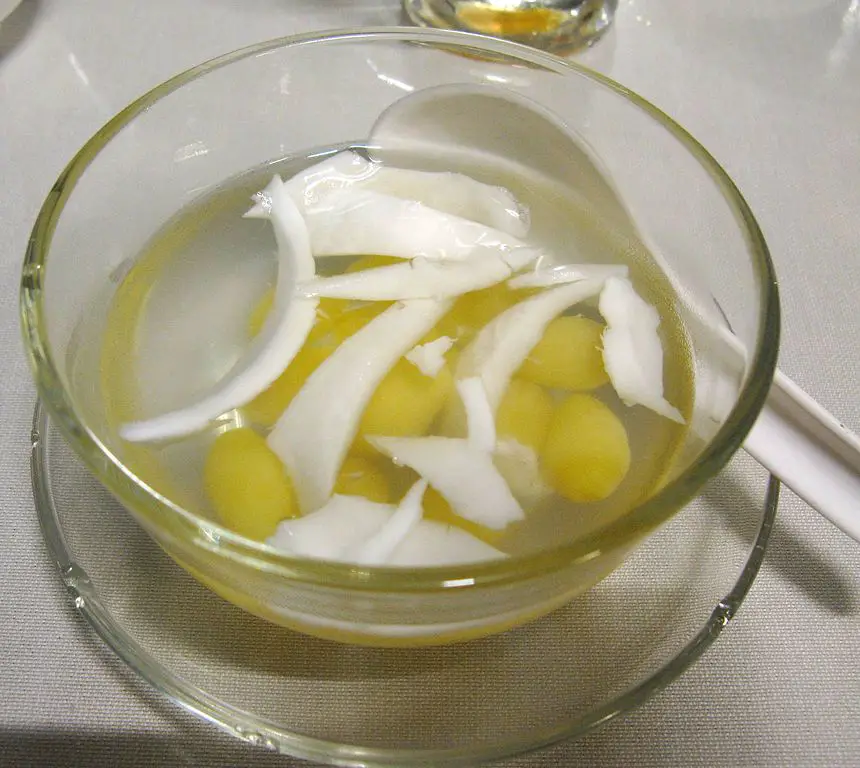
Ginkgo Biloba seeds and coconut flesh in a light syrup served as a dessert in Bangkok, Thailand. (By: David Richfield GNU Free Documentation License, Version 1.2)
Search Wild Foods Home Garden & Nature's Restaurant Websites:
Share:
Why does this site have ads?
Originally the content in this site was a book that was sold through Amazon worldwide. However, I wanted the information to available to everyone free of charge, so I made this website. The ads on the site help cover the cost of maintaining the site and keeping it available.
Google + profile
